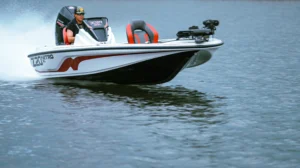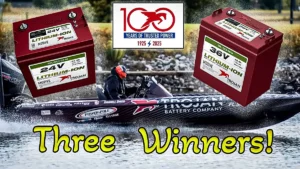Avid crappie angler Allen Treadwell shows us how to find prime crappie holding areas by reading bank transitions and locating the right laydowns and brush piles. While this video is spring-focused, the content applies to reservoirs and natural lakes throughout the year.
Treadwell focuses his efforts on rock transitions with adjacent cover, usually large laydowns that span from shallow to deep. Big, fresh laydowns have more limbs and can reach deeper water — thus a greater carrying capacity. His go-to lure is a simple homemade jig rigged with a plastic and Power Nibble (for color and scent).
FEATURED TACKLE
- PLASTIC – Bobby Garland Baby Shad
- JIG – Round Head Jig with No. 4 hook (homemade), 1/16-ounce
- SCENT – Berkley PowerBait Chroma-Glow Crappie Nibbles, color – Glow Pink
- LINE – Maxima Clear Monofilament Leader Material, 4-pound
- REEL – Pflueger President Micro Spinning Reel
- ROD – Bass Pro Shops Johnny Morris CarbonLite 2.0 Spinning Rod – JCT66MLS
Determining where the fish are positioned on the cover is critical. Unlike many lures, you can fish jigs at multiple depths without re-rigging. Additionally, Treadwell stresses the need to work key cover from all available casting angles, as fish can position very specifically and ignore baits retrieved at certain angles or not see them.
While a basic tactic, Treadwell notes that the biggest mistake he sees crappies anglers make is reeling too soon after the cast and too fast. He advises casting, letting the bait pendulum to depth, and then retrieving slowly with the occasional pop. Too often, crappie anglers overwork the plastic and forgo bites. Lastly, he shares his preferred rod, reel, and line setup for casting and retrieving jigs — a simple configuration you likely already have.
And pay Allen a visit if you’re looking at purchasing property in Arkansas, Missouri, or Kansas!












